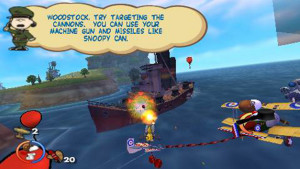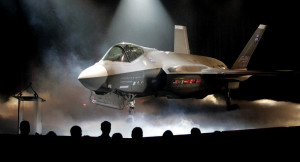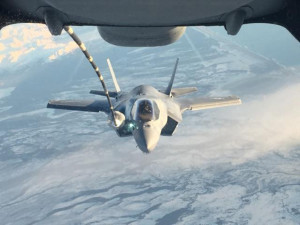Blown Slick Series #10
For some time now, center ring for the airpower flying circus has been the F-35 Lightning II. But since the F-35 was similarly noted as the elephant in the room in #8 in this series some time ago, much as transpired as the a/c moves into operational status within the USMC, USN, and USAF, along with the first Israeli F-35 Adir’s beginning to fly.
To date the Blown Slick series has discussed attack pilots, fighter pilots, fifth generation aircraft, analysis tools and metrics, offered selected books on air warfare and taken a broad look at the ideas behind airpower theory. This post focuses on the F-35 -in the center ring of the airpower “circus.” It serves to provide links to updated operational status before we continue on with more airpower analysis from the “attack pilot” side.
Over time much F-35 writing has focused on cost/schedule/technical problems and with mostly end game agenda of cancelling the program. For writing on the positive side, much presented has been what the a/c is supposed to do, rather than what it has actually been able to perform. Only recently have articles begin to emerge from the pilots who are in the early stages of learning the a/c, its capabilities and developing tactical employment schemes. Bottom line, the “fat lady can’t end the opera” until day-day operational aviators have their say.
The first part of this post covers general considerations of the F-35 as it evolves into the airpower picture and the second part will provide several “reports” from the operational introduction environment.
First, a few general thoughts in observation of the JSF program over time:
- Words mean something. The a/c is called a “fighter” because that’s what the AF has always done and Navy is following that terminology.The “F” in F-35 de-focuses the issue. Had it been A/F or A-35. focus could have been seen more readily on the main mission of attack with air-air capabilities. Indeed, the Marines needed to replace the Harrier, the Air Force wanted a strike compliment to the F-22 air-air capability, and the Navy beginning with F/A-18, driven a lot my CV deck space limitations and maintenance plus of limiting the types of a/c onboard had completely bought into the multi-role strike fighter concept.
- The severe defensive threat environment drives fighter-attack a/c design to high powered/maneuverable multi-role concepts BUT one size fits all in a/c design is most likely a bridge too far
- Somewhere fairly early on, I’m guessing some programmatic perspective got lost and strayed beyond a reasonably foreseeable vision of needed capability, emerging technology, and understanding of the process required to reach the end game.
- It is no longer 1965 and the beginning of Rolling Thunder. As the Vietnam War began, the AF and Navy had gotten way ahead of themselves both technically and operationally with expectations of air-air radar and the radar guided Sparrow missile and the whole idea that beyond visual range (BVR) – no further phone-booth dogfighting engagements – with the F-4 was the new norm. That is not even close to the real world today. Facts from our Middle East air combat demonstrate that in 44 or so air-air kills, only one or two were even insight engagements and certainly were not the result of true dogfights. The fighter merge after exchange of BVR missiles is certainly possible but highly unlikely. Combat pilots need to and will ensure they can “fight” their a/c, but winning Red Baron events is not their mission. In that light the whole F-16 vs F-35 test data point thing was blown way out of proportion
- The Close Air Support (CAS) thing with the A-10 is also very misconstrued Here we get into language again. Many authors seem to equate CAS with all of the bomb dropping air to ground mission. The A-10 is doing a remarkable job but its not all just CAS. The story line here, is that CAS is an attack mission and lots of a/c can do it along with other attack missions that aren’t in close regard to troops on the ground. A more important distinction is the level of threat. High level surface to air systems are available on the market. An attack a/c like the A-10 needs a fairly low threat environment. While the F-35 replaces the A-10 programmatically, there’s more to this story, and as such will receive separate treatment shortly.
- Finally, I think there are several story-lines here that complicate the issues. Because of 5th generation aspects (stealth, sensors, fusion, C2/AWACs type stuff, the real story is way behind compartmented walls. The story line that does come out is a function of all the elements above without good insight inside the security walls and this really muddies up the product. In addition, the intel, info, sensor, C2 side story line is unlike anything we have ever done in a tactical strike fighter. This has been offered as a re-norming of airpower application and would appear different from what other country 5th gen a/c are doing. The 35 possibly suffers from a lot of just “well that’s not the way we do it.” I’ve called the F-35 the “Sheppard of the battlespace” and will remain interested to see where that train of thought goes.
In #8 Part 3 I suggested a thought experiment:
Draw a straight line beginning with WWI and the Sopwith Camel. Continue through WWII with your choice of best fighter (Spits, Zero, Mustang, Corsair), on into the Korean War and the MiG-15 and F-86, then to Vietnam and the MiG-21 and F-4, and next on to the F-14/ F-15/16/18 group. If you think it makes sense add the F-22 Raptor, all together depicting a linear evolution of fighter and multi-role a/c.
I noted that the F-35 Lightning II Joint Strike Fighter will not be found on that line. with caveat of course that it must live up to its potential, but does the F-35 with its stealth, sensors, information fusion and transfer capabilities not give a different perspective on future airpower? The following articles begin to provide pilot based experience that would seem to support the re-norming thought.
Key points:
USMC F-35B deployment
First Marine Corps F-35 Squadron Deploys to Japan: Marine Fighter Attack Squadron 121 departed its former headquarters at Marine Corps Air Station Yuma, Arizona, on Monday en route to its new base at MCAS Iwakuni, Japan. “The Short Take-off Vertical Landing (STOVL) aircraft is a true force multiplier,” Capt. Kurt Stahl, a spokesman for 3rd MAW, said in Tuesday’s announcement. “The unique combination of stealth, cutting-edge radar and sensor technology, and electronic warfare systems bring all of the access and lethality capabilities of a fifth-generation fighter, a modern bomber, and an adverse-weather, all-threat environment air support platform.”
Israeli F-35I
Israel Takes Delivery of First Pair of F-35I ‘Adir” Aircraft The Israeli Air Force (IAF) took delivery of their first two F-35I ‘Adir’ stealth fighter aircraft on December 12th arriving in country at Nevatim AFB. The two F-35I’s are the first of 50 aircraft that Israel has agreed 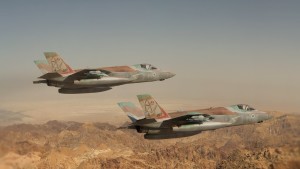 to acquire under an agreement that was signed six years ago. The IAF now will begin a process of training and testing to fully determine how to best utilize and integrate the aircraft into their defense program. The term ‘Adir’ in Hebrew can mean mighty, powerful, noble and great.
to acquire under an agreement that was signed six years ago. The IAF now will begin a process of training and testing to fully determine how to best utilize and integrate the aircraft into their defense program. The term ‘Adir’ in Hebrew can mean mighty, powerful, noble and great.
Red Flag F-35C Results
At Red Flag ‘It’s Tough To Be Legacy Aircraft In An LO World’: Most Red Flag coverage so far has focused on a statistic – the F-35A’s at the Air Force’s toughest combat training exercises are killing enemy aircraft at a rate of 15-1. But one of the pilots flying the F-35s — Lt. Col. George Watkins, 34th Fighter Squadron commander — says: “The kill ratio isn’t that important. We are more focused on the SAM and IADS threat.” Think Russian-made S-300s and 400s. Capt. Stephanie Anne Fraioli explains the fundamental difference between a fourth- and a fifth-generation aircraft: “With fourth-generation fighter airframes, speed and energy equaled life and survivability. In the fifth-generation realm, information equals life.”
F-35s — Lt. Col. George Watkins, 34th Fighter Squadron commander — says: “The kill ratio isn’t that important. We are more focused on the SAM and IADS threat.” Think Russian-made S-300s and 400s. Capt. Stephanie Anne Fraioli explains the fundamental difference between a fourth- and a fifth-generation aircraft: “With fourth-generation fighter airframes, speed and energy equaled life and survivability. In the fifth-generation realm, information equals life.”
Navy F-35C’s Arrive at Lemoore
F-35C’s Arrival at NAS Lemoore: Naval aviation reached a significant milestone on January 25 when the first four F-35C Lightning II aircraft arrived at Naval Air Station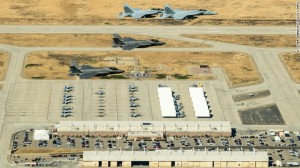 Lemoore. Vice Adm. Mike Shoemaker, Commander, Naval Air Forces noted “the aircraft’s stealth technology will allow it to penetrate and conduct attacks inside threat envelopes, and its integrated sensor packages collect and fuse information to provide a common operational picture for the carrier strike group and joint forces, and most importantly, enable long range identification of air and surface targets. Without question the F-35 is required to win the future high-end fight, but it will be effectively complemented by the 4th generation capabilities and capacity of our Super Hornets – as well as the rest of our future air wing – to include carrier-based unmanned platforms.
Lemoore. Vice Adm. Mike Shoemaker, Commander, Naval Air Forces noted “the aircraft’s stealth technology will allow it to penetrate and conduct attacks inside threat envelopes, and its integrated sensor packages collect and fuse information to provide a common operational picture for the carrier strike group and joint forces, and most importantly, enable long range identification of air and surface targets. Without question the F-35 is required to win the future high-end fight, but it will be effectively complemented by the 4th generation capabilities and capacity of our Super Hornets – as well as the rest of our future air wing – to include carrier-based unmanned platforms.
The Aviators Perspective
F-35 pilot: Here’s what people don’t understand about dogfighting, and how the F-35 excels at it: According to Lt. Col. David “Chip” Berke, the only US Marine to fly both the F-22 and the F-35, the public has a lot of learning to do when assessing a jet’s capability in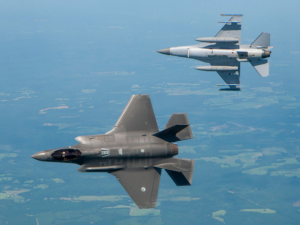 warfare. “The whole concept of dogfighting is so misunderstood and taken out of context, We need to do a better job teaching the public how to assess a jet’s capability in warfare.”There is some idea that when we talk about dogfighting it’s one airplane’s ability to get another airplane’s 6 and shoot it with a gun … That hasn’t happened with American planes in maybe 40 years.”
warfare. “The whole concept of dogfighting is so misunderstood and taken out of context, We need to do a better job teaching the public how to assess a jet’s capability in warfare.”There is some idea that when we talk about dogfighting it’s one airplane’s ability to get another airplane’s 6 and shoot it with a gun … That hasn’t happened with American planes in maybe 40 years.”
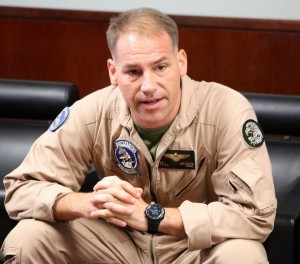 Squadron Fighter Pilots: The Unstoppable Force of Innovation for 5th Generation Enabled Concepts Of Operations: To understand the intangible of pilot performance and the future combat success of the F-35, Lightning II, one just has to listen to what the military pilots who actually are fly the aircraft are saying, all other critics are second order. (Note, this is a long article, but worth the read as it includes comments from all service pilots, test pilots and senior commanders.)
Squadron Fighter Pilots: The Unstoppable Force of Innovation for 5th Generation Enabled Concepts Of Operations: To understand the intangible of pilot performance and the future combat success of the F-35, Lightning II, one just has to listen to what the military pilots who actually are fly the aircraft are saying, all other critics are second order. (Note, this is a long article, but worth the read as it includes comments from all service pilots, test pilots and senior commanders.)
It would appear the day-in-day-out strike fighter pilot thinks we’re on to something. No new high tech weapon comes in easily, but the F-35 is here. The next post will focus on the “attack mission” in more dept. Real added capability is still in work, and so….

